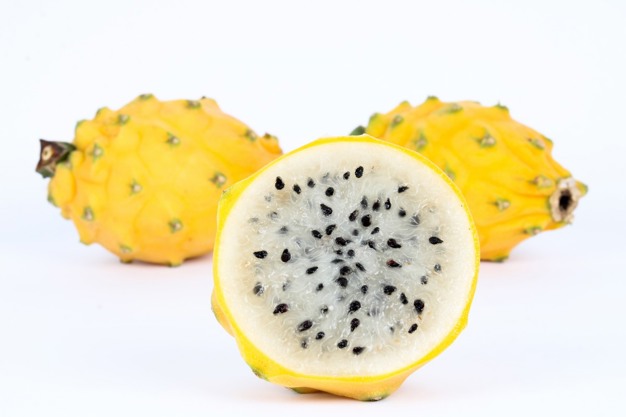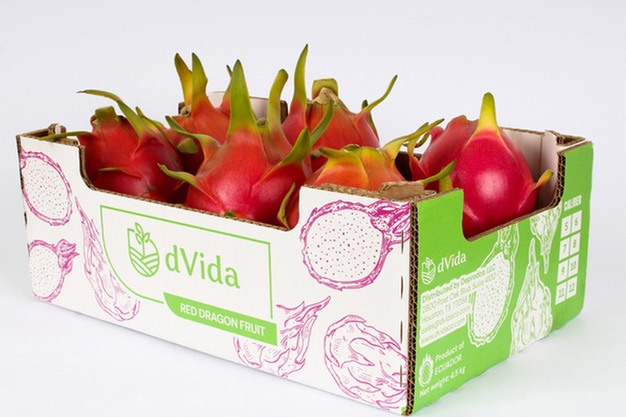Imported dragon fruit supply is plentiful as the peak season for the fruit arrives. "The dragon fruit production season in Ecuador last year achieved exceptional results in terms of exports, marking it as one of the most successful seasons for this fruit. Yellow dragon fruit accounted for 79 percent of total production in Ecuador in 2023," says Ana Paula Jacome of dVida. "Looking ahead to the 2024 season, several producers in Ecuador anticipate a five percent growth in both red and yellow dragon fruit compared to the previous year, while others are expected to maintain their current production levels."

June through July is one of two peak supply times for Ecuadorian dragon fruit, with the second one running from November through April.
In terms of varieties, dVida's offerings include red and yellow dragon fruit with white flesh and it's also anticipating the upcoming production of another variety cultivated in Ecuador (where dVida exclusively sources the fruit from)–red dragon fruit with vibrant red skin and red flesh.
"Our yellow dragon fruit originates from the Palora region. Palora's suitable soils, tropical climate, and adequate sunlight create a conducive environment for cultivating yellow dragon fruit," says Jacome, noting that Palora's location is in the lower altitude of Ecuador's Amazon region where it benefits from the warm temperatures optimal for cultivation. Meanwhile, its red dragon fruit is sourced from the Guayas and Manabi provinces. "The consistent warmth of the tropical coastal climate and the fertile soil of these areas are ideal for fostering growth. These conditions contribute to the fruit's color, flavor, size, and overall market appeal," says Jacome, noting that dVida also offers lime, ginger, mango, and cacao-derived products. dVida is also supplying limited quantities of dragon fruit from Ecuador through Houston, catering to smaller retail markets and niche audiences.
Other producing regions
Industry production is taking place in the US, Mexico, Nicaragua, Vietnam, Thailand, and Taiwan. "Our primary challenges involve complex logistics coordination. Demand volumes are dispersed geographically across various regions, requiring a combination of ocean and air transportation methods. These transportation choices significantly influence logistics and pricing considerations," says Jacome.

As for the demand for dragon fruit, consumer awareness of the fruit has increased. "As dragon fruit grows in popularity, it is seen in more liquors and cuisines. Consequently, demand is anticipated to increase over the next decade," Jacome says. "We anticipate a gradual increase in dragon fruit consumption, mirroring the incremental growth observed over the last two years."
Where is all of this leaving pricing? During peak production periods, prices are anticipated to decrease due to increased supply. "The high production levels of dragon fruit have led to weekly reductions in price," says Jacome, adding that looking ahead, it expects dragon fruit supply and distribution to increase in the next few weeks.
 For more information:
For more information:
Ana Paula Jacome
dVida
[email protected]
www.dvidaco.com
